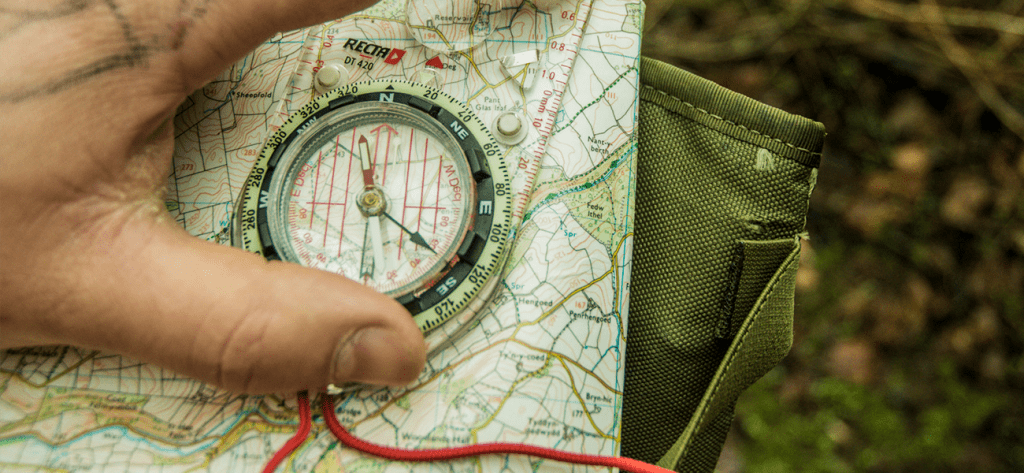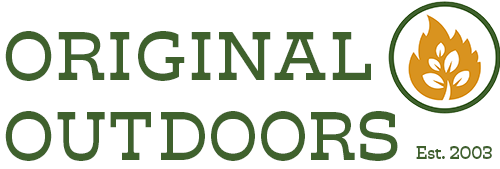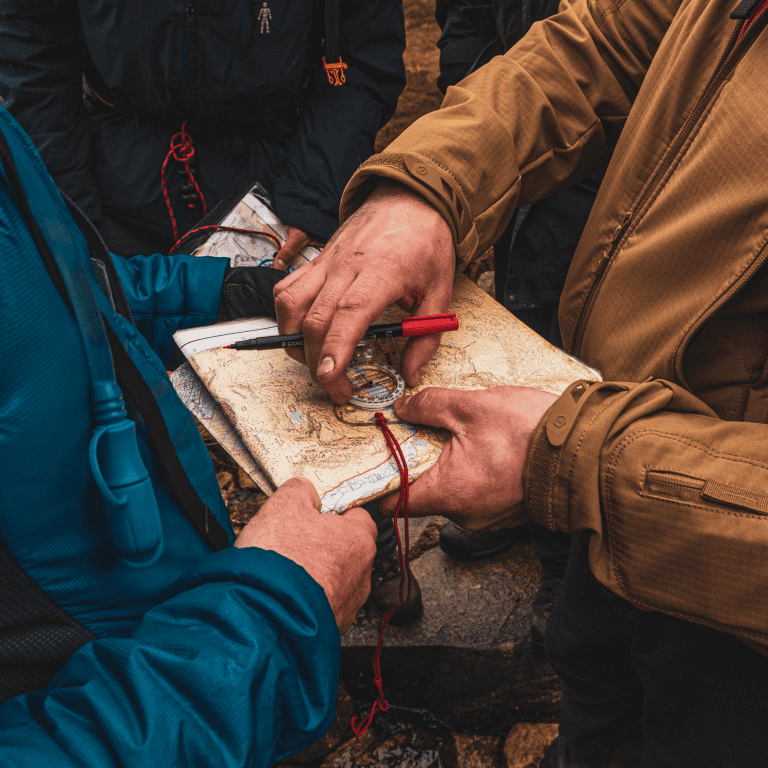
Which is more accurate – mils or degrees?
16th June 2015
When folk book on to our mountain navigation courses we send a kit list over which includes something along the lines of “compass suitable for taking bearings, the baseplate type such as the Silva Type 4 is ideal”. We see a wide and motley selection of compasses on these courses, and most do the job. Something that does crop up occasionally though is the question of Mils VS Degrees – so here is the answer I normally give. But first – the difference between the two systems:
Degrees
This is the most common unit of measurement for compass bearings, and used almost exclusively in the civilian, aviation and marine worlds. The compass is divided into 360 individual ‘degrees’, with each cardinal point of the compass (North, East, South and West) being at 90 degrees to each other. North is at 0 degrees, East is at 90 degrees, South is at 180 degrees and West is at 270 degrees.
The vast majority of compasses sold today will use this system, as will most paper and electronic mapping.
Mils
Mils are largely used by the military. The original system divides the face of the compass into 6283 divisions (Mils being short for mili-radians, derived from there being 2 Pi Radians in a circle, so 2 x 3.1416 or 6.283 mil-radians). Most Mils compasses however round this up into 6400 divisions for easier calculations. It is how bearings are described for artillery, mortar and tank fire and military handheld compasses use the same system. It can also be useful for determining range and scale – for example two objects that appear to be 100mils apart and are 1000m away from the observer are around 100m apart on the ground.
Does it matter if you use Mils or Degrees?
If you are picking up a compass and you are only navigating on your own (or on your own but within a group) then no, it doesn’t matter. The two compasses in the links above are both virtually identical other than the markings on the bezel. As long as you can adequately hold the compass and plot or read the bearing accurately from it then you will be fine.
The real issue comes if you need to communicate that bearing to another person, either by voice or in writing. If you were giving a list of bearings and grid references to describe a route (e.g. go to SJ 123 456 and then walk on a bearing of 240degrees for 300m, then turn on to a bearing of 180degrees and walk for a further 150m) then you need to be sure that the person reading that is able to understand it and use that information using the equipment you have. If you were to give that description using Mils instead then the person following the route would either need to recalculate the bearings or use a compass with Mils on the bezel. So basically you need to consider your audience, and decide if the terminology and language you are going to use is appropriate and relevant to them.
Which is more accurate Degrees or Mils?
This is where things get really interesting. On paper you would assume that Mils were more accurate as you have smaller divisions – there are 17.78 Mils to 1 Degree. More divisions should mean that you get more options when describing a direction… but it doesn’t actually work like that in the ‘real’ world…
The accuracy of a human-plotted bearing using a handheld orienteering compass is 1-2 Degrees AT BEST. Add in the issues of user error, inaccurate or approximated maps and magnetic variation calculations and this all adds up to a potential for an error of 3-4 Degrees – even for the competent user. It is also virtually impossible for a human to walk on a bearing to within 1 Degree accuracy, and other methods of ensuring accuracy such as handrailing, aiming-off and catch features have to be used.
It doesn’t matter how accurate the system of describing direction is, the human element cannot work to that level of accuracy with small hand-held equipment and a paper map.
Mils are very useful if communicating with somebody who is also using that system on a piece of equipment that IS capable of that level of accuracy (i.e. artillery), but in terms of general map-and-compass, orienteering and outdoor use there is no advantage in accuracy between Mils and Degrees.
A Mountain Leader with over a decade of experience across the UK and overseas, Richard is our Lead Instructor and a partner in Original Outdoors. He is a specialist in temperate wilderness skills and the wild foods of the British Isles, and also works as a consultant for various brands and organisations. Richard lives in North Wales.
A Life more Wild.
A Life More Wild is the philosophy which underpins everything we do.
It encompasses practical skills, personal development, community learning and a journey to live more intentionally.





